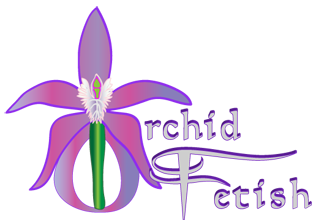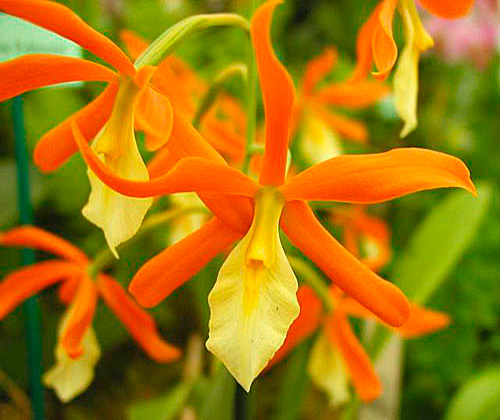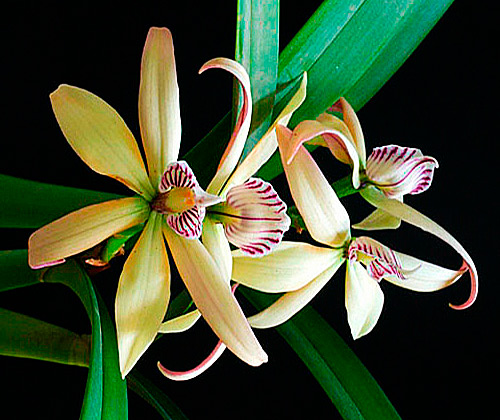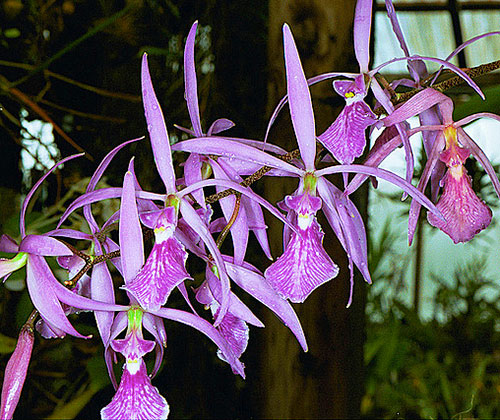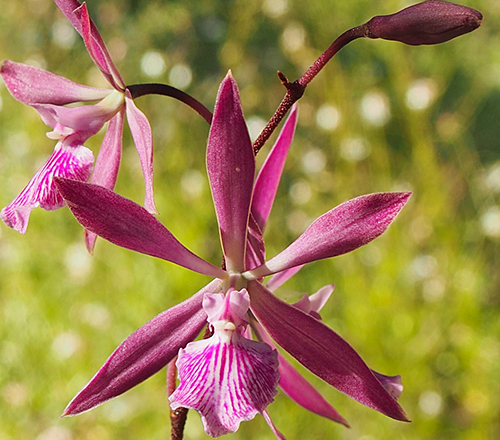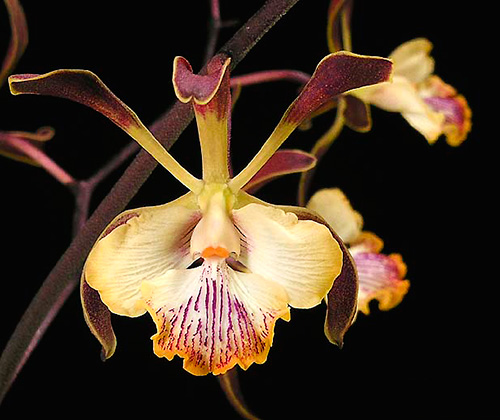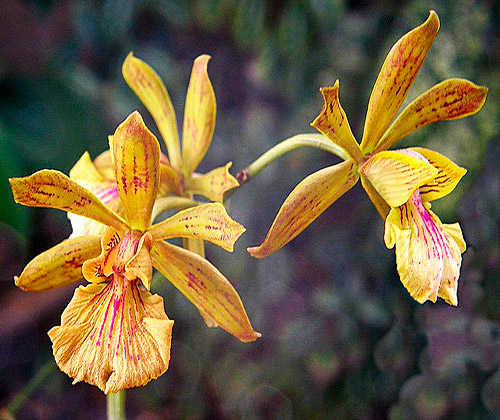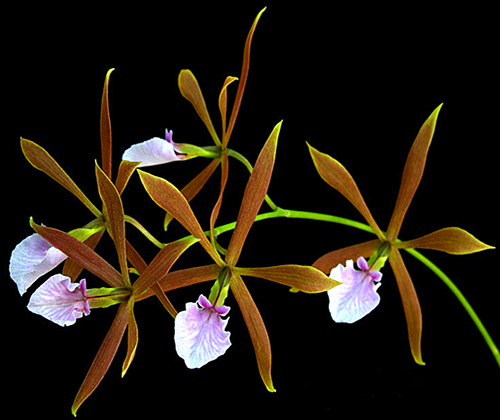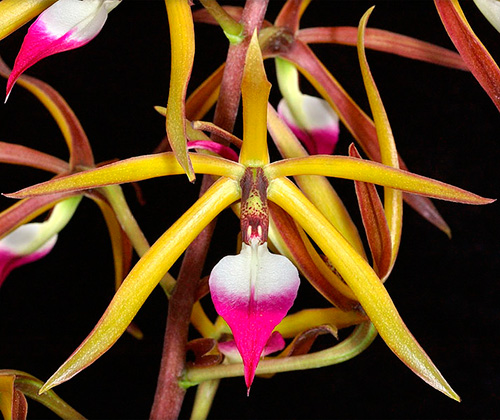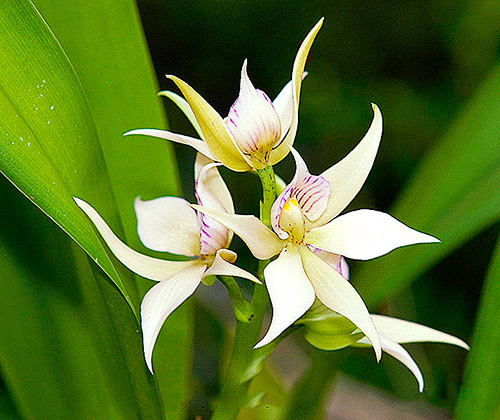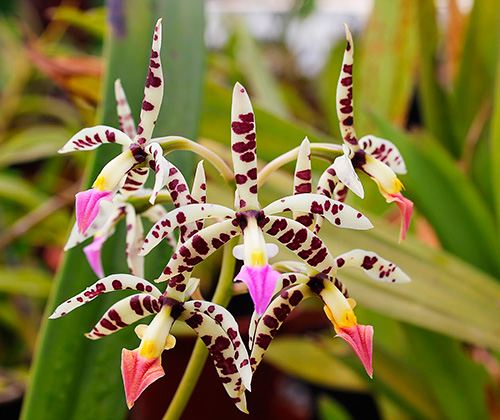Encyclia Orchid
The Cockleshell Orchid
Encyclia orchids, affectionatley called cockleshell orchids, thrive when planted on an orchid mount to simulate the epiphytic growing conditions of the wild. Some horticulturists say the encyclia orchid looks an Octopus because of its dangling petals and sepals. Although not fragrant, the encyclia orchid can bloom for several consecutive months. This species have foliage and growth characteristics similar to Cattleya species. The flower spike grows from the top of the pseudobulb. Some species have strikingly beautiful flowers. Other species have unremarkable or insignificant flowers. The largest flower of any of the Encyclia species is 4 cm. This group of plants vary from truly epiphytic to occassionally terrestrial. They may be very small to quite large, either with or without rhizomes, with underground roots which travel and produce new plants. Species with somewhat large onionlike pseudobulbs were once included in Epidendrum . Most of these species are now placed in the genus Encyclia.. Those species with slender, simple or branched stems, with leaves at intervals throughout their entire length, were left in the genus Epidendrum .
Light
These plants require a large amount of light. once established, filtered sunlight should be supplied. Both Epidendrum and Encyclia grow very well in a area with house screening overhead, such as a pool or patio enclosure. The ideal location is an east facing area, where the plants will get morning sun, but not the hot afternoon suPlace the Encyclia orchid in a window where it receives morning sunlight and partial afternoon shade. Too much light will burn the Encyclia orchid's leaves, so avoid placing it in direct sunlight for many hours. (ref1) At night, leave the window near the Encyclia orchid open or move the orchid to a location that is 10 to 15 degrees Fahrenheit cooler. This will help the orchid bloom.
Temperature
Widely diverse, depending on species. In very general terms, a range of 50° to 85° F. is preferable for most plants, although certain species from higher altitudes are happier with cooler temperatures.
Humidity & Water
Epidendrum and Encyclia require abundant moisture at their roots, especially when in active growth. When the pseudobulbs are mature, the watering should be somewhat curtailed. They should be placed in a very well-draining medium. Water once or twice times a week in relatively cool weather, but at least 3 times a week in hot weather. Water the Encyclia orchid one to two times per week. Allow the soil to dry out between waterings. If the soil is dry 1 inch down, the orchid needs water. (Ref1) Mist the encyclia orchid with a spray bottle each morning as these orchids like humid air.
Fertilizer
Epidendrum and Encyclia should be fed consistently, when in full growth. During the Spring through early Fall, fertilizing every seven days, with several clear waterings in between, will make your plants happy. In the late Fall through Winter, a light feeding once a month will suffice.
The fertilizer formula should match the potting medium. Use 20-20-20 with tree fern, charcoal, or various inorganic aggregates, but use 30-10-10 with fir bark. We recommend non-urea based fertilizers at half strength. Non urea fertilizers provide 100% immediately available nitrogen, which urea based fertilizers do not. Any fertilizer which also has micro nutrients is recommended. The micro nutrients provide strength for the new growth and support for the flowers
Potting
Epidendrum and Encyclia do not resent being disturbed, so re potting should be undertaken whenever necessary. The best time is after all flowering has ceased. To minimize root damage, a warm water soak for 10 minutes, will make most roots very pliable and easier to remove from the container.
The best potting container for Epidendrum and Encyclia plants is clay orchid pots. The plastic pots are second choice and considerable cheaper. Water in plastic pots does not evaporate as fast as in clay pots, but if adjustments in watering frequency are made, no problems will be encountered. Wooden baskets are ideal and can be used to grow specimen size plants, as the plants can grow in the same basket for many years. The baskets allow free air flow over the roots, and eliminate over watering problems.
The potting medium must be well-drained, i.e. coarse fir bark, lava rock, river rocks, pieces of broken pottery, chunks of tree fern, hardwood charcoal, etc. so that the roots can be wet, but then dry quickly. When dividing these plants, always divide into parts with four psuedobulbs or stems. Remove any dead roots from the divisions, then lay the divisions aside until new root growth begins. At that time, usually a week or so, repot the divisions in their new pots. Now the plants can be watered and fertilized as usual, without worrying about rotting them, because they retained no roots in the division. Newly repotted plants should be placed in slightly lower light for several weeks.
